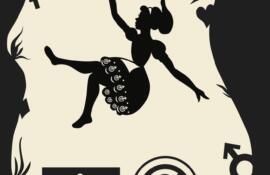The sleepy coastal town of Geraldton, Western Australia, isn’t a typical setting for the operations of a criminal syndicate. But this isn’t the kind of crime that typically makes headlines.
On a cool September night in 2018, Dave Mackintosh and his family were asleep when intruders broke in. Not even their four Belgian Shepherds stirred.
“I lost about $150,000,” Mackintosh says “The coppers here had never struck anything like it.”
The thieves’ target was a “reptile pit” and a shed where Mackintosh, an avid reptile enthusiast, kept dozens of snakes and lizards, including Centralian blue-tongues, shingleback lizards and several python species.
Just one of his shinglebacks — a stumpy-tailed lizard considered relatively commonplace in Australia’s west — might sell for $100 on the domestic market. But in countries like China, such exotic specimens are highly prized, and official estimates say they could be worth $5,000.

Shinglebacks often die on long-haul journeys, though it only takes a few to be profitable. (Supplied: WA Department of Biodiversity, Conservation and Attractions)
The night before the break-in, Mackintosh recalls seeing a light down at the pit, but dismissed it as the glare of a headlight.
“They’d obviously staked our property out for quite a while,” he says. “It’s organised crime”.
As a legal reptile trader with a license to collect animals from the wild, Mackintosh has come across criminal poachers in the past, and says he’s received death threats after reporting a suspicious licence plate to police.
“It just came from my observation on a property where I knew I was allowed to collect reptiles and no one else was,” he says.
Since then, he’d been reluctant to get involved in wildlife investigations. “I’ve got kids, and why jump into a fry pan?”
Mackintosh’s story provides a glimpse into the exploding illicit wildlife trade, estimated to be worth at least AU$10-35 billion by the 2016 United Nationals World Wildlife Crime Report, provoking Interpol to last year run a six-week international sting operation targeting reptile rackets in 22 countries including Australia.
Globally, Operation Blizzard seized 4419 live animals, most originating from Africa, Southeast Asia and South America. Over 150 illegal reptile products were also confiscated, including medicines, handbags, watch-straps and taxidermy.
Blizzard’s ambitions were to identify criminals involved in reptile poaching and smuggling, well recognised as being closely associated with organised crime, to strengthen communication between international wildlife law enforcement, and to send “a clear message to criminals that the global law enforcement community is homing in on them”, in the words of Interpol’s Daoming Zhang.
But in Australia, the sting appears to have barely scratched the surface of a burgeoning area of criminal enterprise.

Lizards are often wrapped up and stuffed in luggage, causing injuries that usually result in euthanasia. (Supplied: WA Department of Biodiversity, Conservation and Attractions)
The reptile smuggling uncovered by authorities so far is “only the tip of the iceberg”, says Dr Michael Gardner, a biologist at Adelaide’s Flinders University.
Australia is home to 869 identified native reptile species, over 90 per cent of which are unique to the continent. This only adds to their lustre on the thriving black market.
“Anyone who’s a collector wants to have the rarest thing, the most unique thing out there, and Australian animals are unique,” says Gardner.
They are also conveniently adapted to the smuggling trade’s needs. Their bodies are conditioned to “shutting down and being cold, and not needing any food or water for long periods of time.
“I think that’s part of the reason why they’re targeted as a group. They survive [transport] better than a bird would.” That, and they don’t get picked up by heat detectors.
Academics like Gardner are becoming increasingly concerned that their published research is being used by poachers to locate species.
In 2018, a pair of endangered pygmy bluetongue lizards appeared for sale on a Russian website. The bluetongues had markings that suggested they may have come from a research site.
“That species is endangered. It is only found in South Australia, so it couldn’t have come from anywhere else,” says Gardner.
The networks smuggling wildlife out of the country may rank as organised crime, but often their tools of trade require no great sophistication.
According to Channing Mavrellis, the Transnational Crime Director of Global Financial Integrity, a think tank tracking international illicit cash flows, smugglers use platforms like Gumtree, Facebook and Instagram to connect with buyers.
“If the destination country is Japan, for example, there may be one or two people in Australia who receive an order for particular species, which they pass on to local poachers. Once an order is filled, they will either smuggle the animals to Japan on their person or through the mail,” she said.
Mavrellis says there is no need for smugglers to bother to hide the money trail.
“As far as a bank, a money service business, or police know, this is a legitimate transaction.”
While some transactions are done in cash, “if the sale takes place on an online platform, it’s likely that a debit, credit card or Paypal, will be used”.
Operation Blizzard in Australia saw a coalition of agencies from federal, state and territories working together on a campaign of “surprise raids, compliance inspections and random airport checks” rolling out over three weeks, according to statement by the federal Department of the Environment and Energy.
And yet it yielded just 17 cases of “non-compliance” and the seizure of 69 reptiles, according to the federal department.
Michael Gardner argues enforcement sweeps like that undertaken through Operation Blizzard are “problematic” because of the time and resources they require.
He and other reptile experts argue tracking wildlife crime is costly, time-consuming and often fails to net results.
Meanwhile, on the illegal side of the operation, the trade is low risk and high reward.
“You’re not deterring people just by nabbing the stuff,” says Richard Janeczko, former national manager of investigations of Australian Customs, now Australian Border Force. Even if the smugglers lose 10 or 20 per cent of their specimens, they will profit on the other 80 or 90 per cent.

Another WeChat advertisement, this time for a knob-tailed gecko
That feeds a deadly imperative in their operations. “Smugglers know that many of the animals might not survive, so they try to smuggle as many animals as possible in each attempt to minimise financial losses,” says Channing Mavrellis.
“Dozens or even hundreds of animals might be moved in a single smuggling attempt. Animals frequently die during smuggling from suffocation, dehydration and trauma.”
The maximum penalty for wildlife trade offences in Australia is high – at least on paper. Wildlife smugglers can receive up to 10 years imprisonment and fines as high as AU$210,000 for individuals, or up to $1,050,000 for corporations.
Yet, when caught, most wildlife smugglers only receive small fines and rarely any jail time.
“Even though the penalty might be 10 years, you’d be hard pressed to find anybody who’s been sentenced to anything like one year,” said Janeczko.
Operation Blizzard led to only one arrest in Australia: a 27-year-old Japanese woman found with 19 lizards in her suitcase at Melbourne airport. Suspected of being involved in an international wildlife trafficking syndicate, she was sentenced to four months in prison.
The largest fines issued during Operation Blizzard were in Western Australia. Officers from the Parks and Wildlife Service gave out two infringement notices totalling $5000, after finding two live pythons and a bearded dragon without appropriate permits.
In Queensland, Operation Blizzard resulted in 13 animals being seized by the Queensland Parks and Wildlife service, which the department claimed “sent a clear message of zero tolerance”.
But there were also no arrests, and according to Janeczko, the only effective strategy to curb smuggling will be evidence of successful prosecutions and substantial penalties.
“That’s one of the issues with these crimes — the penalties might be high, but rarely does anybody get anything approaching the maximum penalty,” said Janeczko.
Over the last five years the Australian Border Force has detected an increased number of native reptiles being smuggled out of Australia. The number of skinks — a family which includes bluetongue and shingleback lizards — seized by border officers and the Department of the Environment and Energy has grown from zero in 2014-15 to 80 in 2018-19, according to data provided by a Department of the Environment and Energy spokesperson. This figure does not include seizures by state environment agencies.
Experts are concerned that the detection rate of illegally smuggled Australian wildlife is only a tiny fraction of the reality, with one specialist – Dr Phill Cassey, a conservation biologist at the University of Adelaide – telling reporters last year that the figure could be as low as three per cent.
Currently, collaboration between states, territories and federal departments only occurs when a specific task-force like Operation Blizzard is organised, says Janeczko.
“In some countries they’ve set up units to focus on [wildlife] crime.” But, in Australia, he says, “we don’t have a special ongoing group that just does that.”
While Janeczko believes increasing the penalties for wildlife crime could help stem the illegal trade, others argue criminalising the trade is the wrong way to effectively tackle the problem
WA breeder Dave Mackintosh says that governments “should just allow sustainable harvesting and farming. If people want to pay $10,000 for [reptiles], let them pay $10,000. But do it humanely, so they are controlled and sustainably bred”.
Michael Gardner agrees, saying that if the export of certain species were legalised, it would make those species “less attractive” to smugglers.
“People on the black market target a species because they’re going to get more money out of them. So if the if the particular species were allowed to be traded internationally, potentially that would reduce the smuggling because then it’s not as high a market commodity.”
Mackintosh says if he were allowed to export reptiles, his hobby business would start earning enough for him to employ people and the taxation revenue from the operation could be put back into conservation.
Instead, Australian reptiles are poached from the wild and pinched from personal collections without a cent going towards the environment or reptile welfare. As it stands, profit from the illegal reptile trade is enjoyed solely by the smuggler.

A lizard is recovered from an attempted smuggling operation. (Supplied: WA Department of Biodiversity, Conservation and Attractions)
A GLIMPSE INSIDE THE LIZARD TRADE

Advertisements on WeChat selling Australian reptiles
The Citizen found mainland Chinese reptile breeder Xiao Lang* online showcasing Australian reptiles to his 150,000 fans through daily photo and video posts on Weibo, the popular Chinese blogging platform.
The collection included knob-tailed geckos and at least six other Australian gecko species. When we asked the price of one specimen, he moved the conversation to a private message on WeChat, China’s all-in-one social media, messaging and financial transactions app.
Once inside, his WeChat profile functioned more like an online reptile market, with an expanded “For Sale” list that included protected species and illegal imports.
Xiao Ming, a reptile enthusiast from Xinxiang, in Henan province, mainland China with over 20 exotic lizards, who has bought many of his specimens online, said Australia’s strict export laws fuelled high prices for Australian reptiles.
Chinese reptile collectors like Ming would pay anywhere from AU$400 to $10,500 for a single Australian knob-tailed gecko.
He said that not all reptiles exported from Australia were smuggled, claiming “people will go abroad to join reptile exhibitions and bring reptiles back to breed.” Knob-tailed geckos are, however, notoriously difficult to breed in captivity.
Ming made no comment when asked whether any of his reptiles were smuggled into China illegally.
Another Chinese reptile collector, who asked to be referred to only as Godzilla, said:
“The cost is high, the express [mail delivery] is difficult, and the Border Force are strict, so there are very few reptiles legally imported from Australia”.
Godzilla knows the dangers. He mentions a friend jailed in China for selling a Burmese python online. Nevertheless, he said that “great profits” meant “transnational smuggling crimes would not be completely stopped by strict laws.”
This is the second part of a special Citizen team investigation. Link here to Part 1: Cold-blooded treasures – the illegal traffic in Australian reptiles.
An edited version of this story is co-published by The Age: read it here.



